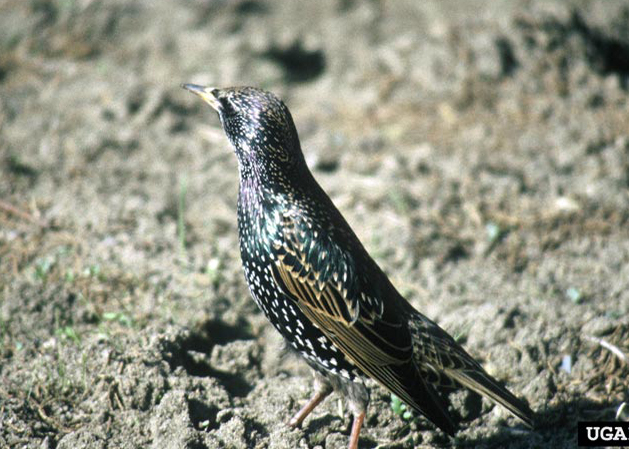European Starling
Sturnus vulgaris
Identification
- 7 1/2 - 8 1/2 inches long
- black with green-purple sheen in summer and spring
- heavily speckled with white and gold in winter
- stocky and short-tailed
- eggs: white to light blue, some with dark spots
Nesting Habits
- nest in building cavities, tree cavities or holes, nooks and crannies in and around structures
- build nests from grasses, twigs and debris lined with feathers and other soft materials
- some migrate south or winter; others remain year round
Diet
- insects and other invertebrates
- grains, berries, fruits and seeds
Significance
- health concern; associated with over 25 diseases and ectoparasites, including bird mites
- contaminate sidewalks, vehicles, buildings, etc., around their nesting sites with feces
- make loud noises that can be disturbing
IPM Recommendations
- Once the species is considered a problem, first check federal, state and local regulations for bird management.
- Install plastic netting on parts of the building used for roosting and nesting or use deterrents such as plastic or metal spines on ledges.
- Reduce or eliminate their feeding sites and water sources.
- See Utah Administrative Code R657-3-7 for more information on legal issues surrounding starling control.




